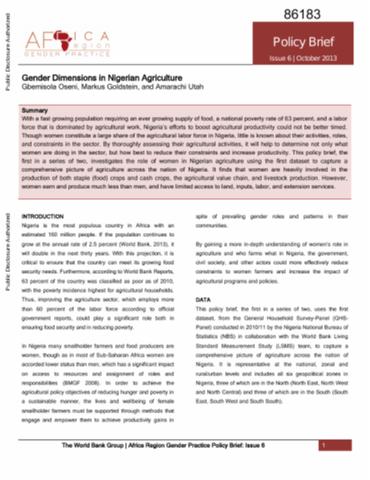Resource information
With a fast growing population requiring an ever growing supply of food, a national poverty rate of 63 percent, and a labor force that is dominated by agricultural work, Nigeria's efforts to boost agricultural productivity could not be better timed. Though women constitute a large share of the agricultural labor force in Nigeria, little is known about their activities, roles, and constraints in the sector. By thoroughly assessing their agricultural activities, it will help to determine not only what women are doing in the sector, but how best to reduce their constraints and increase productivity. This policy brief, the first in a series of two, investigates the role of women in Nigerian agriculture using the first dataset to capture a comprehensive picture of agriculture across the nation of Nigeria. It finds that women are heavily involved in the production of both, staple (food) crops and cash crops, the agricultural value chain, and livestock production. However, women earn and produce much less than men, and have limited access to land, inputs, labor, and extension services.


